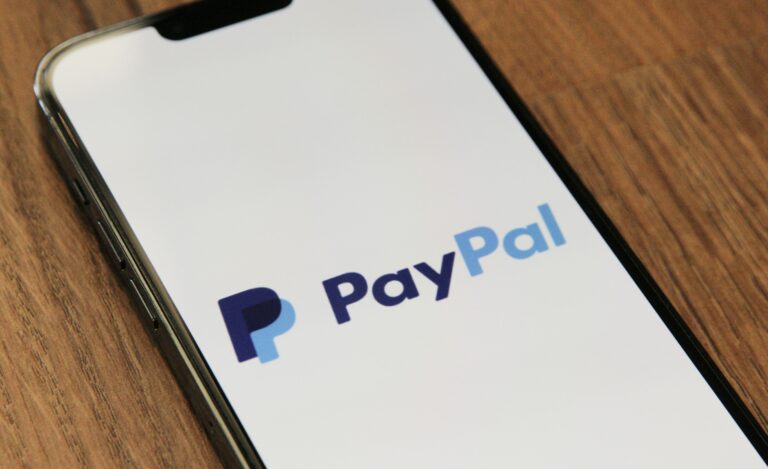Stablecoins have quietly revolutionized what we think and know about digital payments. They create a bridge between traditional finance and the crypto world, which is much needed no doubt.
Unlike their volatile cryptocurrency cousins, these digital currencies maintain relatively stable values by pegging themselves to established assets like the US dollar, euros, or even gold.
Today, businesses and consumers turn to stablecoins more and more for everything from big cross-border payments to simple daily purchases, and the trend shows no signs of slowing down.
What Exactly Are Stablecoins?
Think of stablecoins as digital dollars that live on the blockchain. These cryptocurrencies aim to eliminate the price volatility that makes Bitcoin and Ethereum unsuitable for everyday transactions.
While Bitcoin might swing 10% in a single day, a US dollar-pegged stablecoin like USDC maintains its value at roughly $1.00.
Developers achieve this stability through different mechanisms:
- Fiat-collateralized stablecoins back each token with traditional currency held in reserve
- Crypto-collateralized stablecoins use other cryptocurrencies as backing, typically over-collateralized to account for volatility
- Algorithmic stablecoins rely on smart contracts and market mechanisms to maintain their peg
The most popular stablecoins include Tether (USDT), USD Coin (USDC), Binance USD (BUSD), and DAI. Combined, these four represent over 90% of the stablecoin market, which now exceeds $150 billion in total value.
How They Change Payment Processing
Cross-Border Transactions
Traditional international payments often take days to settle and come with hefty fees. Banks charge anywhere from $15 to $50 for wire transfers, plus unfavorable exchange rates.
Stablecoins flip this model upside down.
A business in New York can now send USDC to a supplier in Thailand, and the transaction settles within minutes for under $1 in fees. The supplier receives digital dollars instantly, eliminating the uncertainty of currency fluctuations and reducing working capital requirements.
Payment processors have taken notice. Companies like Circle, Stripe, and PayPal now integrate stablecoin rails into their platforms. This integration allows businesses to tap into faster, cheaper payment networks while maintaining the stability customers expect.
E-commerce Gets a Digital Upgrade
E-commerce platforms increasingly offer stablecoin payment options alongside traditional methods. Shoppers can now pay with USDC or USDT just as easily as they would with a credit card, but with some compelling advantages.
Merchants love stablecoins because they eliminate chargeback risks. Once a stablecoin transaction confirms on the blockchain, it becomes irreversible. This finality protects businesses from fraudulent disputes while reducing processing costs.
Traditional card processing fees range from 2.5% to 3.5%, while stablecoin transactions typically cost less than 1%.
Smart contracts also enable programmable payments. Subscription services can automatically collect payments, escrow services can hold funds until delivery confirmation, and loyalty programs can instantly distribute rewards.
These capabilities transform static payment flows into dynamic, automated systems.
Global Adoption Rate
Stablecoin adoption varies dramatically by region, with developing economies leading the charge. Countries experiencing currency instability or strict capital controls show the highest usage rates.
Latin America is a hotbed of stablecoin activity. Argentina, facing persistent inflation, sees citizens convert pesos to USDT to preserve purchasing power. Venezuela’s economic crisis has driven widespread adoption of dollar-pegged stablecoins as a store of value and medium of exchange.
Asia-Pacific markets steadily integrate stablecoin. Singapore and Hong Kong have developed clear regulatory frameworks, encouraging financial institutions to offer stablecoin services. South Korea’s tech-savvy population embraces stablecoins for gaming, DeFi applications, and remittances.
Africa has the most compelling use case. Nigeria leads global stablecoin trading volumes relative to GDP, as citizens seek alternatives to the volatile naira. Kenya and Ghana follow similar patterns, with stablecoins facilitating both domestic commerce and international remittances.
The institutional adoption of stablecoins continues to evolve as well. Tesla holds Bitcoin on its balance sheet, but MicroStrategy has explored stablecoin treasury management.
Traditional payment giants like Visa and Mastercard have launched stablecoin settlement capabilities, signaling mainstream acceptance.
ACCEPT MORE PAYMENT MODES ON CHECKOUT
Advantages of Stablecoins
Speed and Efficiency
Stablecoins operate 24/7/365, unlike traditional banking systems that close on weekends and holidays. A business can send payments on Christmas Day and watch them settle within minutes. This always-on availability is particularly valuable for global operations spanning multiple time zones.
Settlement speed creates cascading benefits. Faster payments improve cash flow, reduce counterparty risk, and enable more efficient inventory management. Suppliers can ship goods knowing payment will arrive quickly, while buyers gain confidence in transaction finality.
Cost Reduction
Traditional payment rails stack multiple fees: processing, network, interchange, and foreign exchange charges. These costs compound quickly, especially for international transactions.
Stablecoins simplify the fee structure. Users typically pay only network fees (often under $0.50) plus any platform charges from their payment processor. Even with processor margins, total costs rarely exceed 1% of transaction value.
Financial Inclusion
Stablecoins democratize access to digital payments. Anyone with a smartphone can create a wallet and start transacting within minutes. No credit checks, minimum balances, or complex documentation required.
This accessibility is especially useful in regions with limited banking infrastructure. A farmer in rural Kenya can receive payment for crops directly to their mobile wallet, bypassing expensive money transfer services and lengthy bank processes.
Programmability and Innovation
Smart contracts unlock payment capabilities impossible with traditional systems. Businesses can create self-executing agreements that automatically release payments upon meeting predetermined conditions.
Consider supply chain financing: a smart contract can automatically pay suppliers when goods reach specific milestones, verified through IoT sensors or shipping APIs. This automation reduces administrative overhead while ensuring timely payments.
FUTURE-PROOF YOUR PAYMENT SYSTEM
The Disadvantages of Stablecoins
Regulatory Uncertainty
Crypto regulations evolve rapidly. The European Union’s MiCA regulation, the US Treasury’s oversight initiatives, and varying national approaches create a complex compliance landscape.
Businesses face uncertainty about future requirements. Will stablecoin issuers need banking licenses? How will tax reporting work? What consumer protections will apply? These unanswered questions make long-term planning challenging.
Technical Complexity
Integrating stablecoin payments requires technical expertise that many businesses lack. Wallet management, private key security, and blockchain interaction present new operational challenges.
Recovery procedures also differ from traditional systems. Lose access to a bank account, and customer service can help restore it. Lose private keys to a stablecoin wallet, and those funds may be gone forever.
Liquidity and Market Risks
While stablecoins aim for price stability, they’re not completely risk-free. USDT has occasionally traded below $0.99, and Terra’s UST dramatically collapsed in 2022. These events remind users that they carry risks beyond those of traditional currencies.
Market liquidity can also vary. While major stablecoins like USDC maintain deep liquidity pools, smaller or newer ones might experience temporary trading disruptions.
Operational Challenges
Cryptocurrency transactions are irreversible, creating operational risks. Send funds to the wrong address, and recovery becomes extremely difficult. This finality requires businesses to implement robust verification procedures and error-checking mechanisms.
Customer support also becomes more complex. Traditional payment disputes follow established processes, but stablecoin issues often require blockchain expertise and novel resolution approaches.
Should Your Business Accept Stablecoins?
The answer depends on several factors specific to your operation and customer base.
Consider cryptocurrency if you:
- Operate internationally and want to reduce foreign exchange costs
- Serve customers in regions with limited traditional payment options
- Face high chargeback rates or payment fraud
- Want to automate payment processes through smart contracts
- Target crypto-native customers who prefer digital asset payments
- Need faster settlement times to improve cash flow
Proceed cautiously if you:
- Operate in heavily regulated industries with unclear stablecoin guidance
- Lack technical resources for secure implementation
- Serve primarily domestic customers satisfied with existing payment methods
- Cannot absorb potential losses from operational errors
- Need extensive payment dispute resolution capabilities
Implementation Strategy
Businesses ready to accept crypto should start small and scale gradually. Begin with a pilot program targeting specific use cases or customer segments. This approach allows you to understand operational requirements while limiting initial risk exposure.
Partner with established payment processors that offer stablecoin integration.
Develop clear policies for crypto handling, including security procedures, accounting practices, and customer communication protocols. Train staff on new processes and establish relationships with knowledgeable service providers.
The Future Landscape
Central bank digital currencies (CBDCs) will likely complement rather than replace stablecoins. While CBDCs offer government backing, stablecoins provide innovation and global accessibility. We’ll probably see both coexist, serving different market segments.
Payment infrastructure continues evolving to support crypto. Major card networks are building blockchain capabilities, while traditional banks explore crypto custody and conversion services.
Regulatory frameworks will eventually provide clarity, likely increasing institutional adoption. As compliance requirements solidify, more conservative businesses will feel comfortable integrating stablecoin payments.
Making the Call
Stablecoins are a genuine innovation in digital payments, offering speed, cost efficiency, and global accessibility that traditional systems struggle to match. However, they also introduce new risks and operational complexities that businesses must carefully consider.
The decision to accept stablecoins shouldn’t be driven by hype or fear of missing out. Instead, evaluate them against your specific business needs, customer demands, and risk tolerance. For companies with international operations, tech-savvy customers, or high payment processing costs, they offer compelling advantages.
Start by educating yourself and your team about the technology, regulations, and best practices. Experiment with small amounts to understand the user experience. Most importantly, approach stablecoins as one tool in your payment toolkit rather than a replacement for everything else.
The payments landscape continues evolving, and stablecoins have secured their place in that future. Whether your business chooses to participate now or wait for further development, understanding these digital currencies has become essential for any forward-thinking payment strategy.









